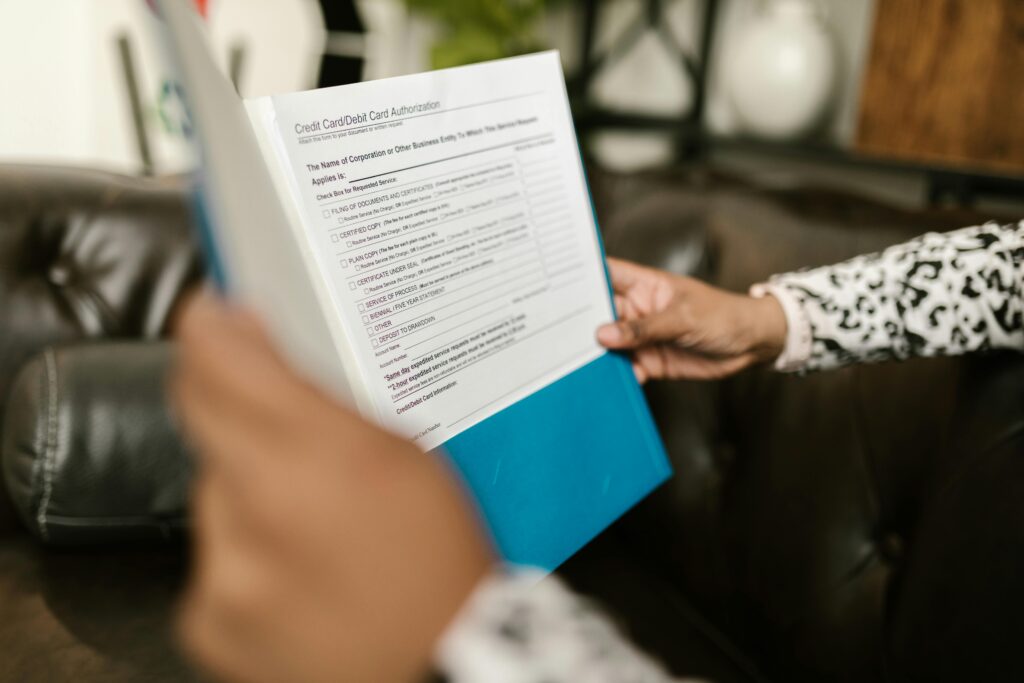You built something new. Maybe it’s a piece of code. Maybe it’s a breakthrough model. Maybe it’s a clever system that works better than anything else out there. Whatever it is, you know it matters—and you don’t want someone else to copy it or claim it as their own.
Starting With What You’ve Already Built
Why You Don’t Need to Start From Scratch
Most founders and engineers think they need to write up some big, formal patent explanation to start. That’s wrong.
In fact, starting from scratch can slow you down and lead to weak drafts.
The best way to begin is by simply using what you’ve already created in the process of building your product.
You’ve probably written code comments, documented your architecture, built pitch decks, made diagrams, or even talked about your invention in Slack or email.
That’s gold. That’s where the real details of your invention live—not in a perfect write-up, but in the messy, clear, real-world language you’ve already used with your team.
PowerPatent is built to take that raw material and turn it into something strong and structured.
The more real and specific your input, the better your output. So don’t clean it up. Don’t polish it. Just gather it.
The Smartest Way to Prep: Collecting What Matters
If you’re serious about filing a patent quickly, you can take a little time to prep your materials in a smart way.
This isn’t busywork—it’s a fast, focused way to save hours later.
Start by pulling together whatever you’ve used to explain your product to others.
That might be internal documentation, technical specs, or even just a Notion doc. If you’ve ever written out a “how it works” explanation for a demo, grab that too.
Also include diagrams. Founders often forget this, but a simple flowchart or block diagram can say more than a page of writing. It doesn’t need to be fancy.
It just needs to show what talks to what, and how data flows through your system. PowerPatent can extract real insights from even rough visuals.
Most importantly, include any “why we did it this way” notes. Patent examiners—and competitors—care a lot about why your invention is different or better.
Even a quick comment you left in code like “this solves a latency issue that broke XYZ before” is extremely valuable.
By being a little strategic in how you gather these things, you make the drafting process way smoother.
You also ensure that the patent reflects the real strengths of your invention—not just a surface-level description.
Thinking Like a Founder, Not a Lawyer
Here’s another mindset shift: when you’re starting a patent draft with PowerPatent, don’t try to think like a lawyer.
Think like a founder who’s about to pitch your product.
What’s the real magic of what you’ve built? What did you figure out that others haven’t? What was the “aha” moment?
If you had to explain it to an investor, how would you say it?
This kind of language is often more useful than legal language. It gets to the core of what matters.
And the PowerPatent platform is designed to understand and translate that into formal claims.
That means you get to talk like a builder—and the system helps you bridge the gap.
So don’t overthink it. Don’t worry about writing things the “correct” way. Start with how you’d explain it to someone smart, but not technical.
That’s usually the best version of the story.
How to Catch What Others Miss
When people write about their inventions for the first time, they often focus only on the end result. But patent strength often lives in the process.
The way your system handles inputs. The way it scales. The way it avoids known bugs or inefficiencies. These things matter.
One of the most powerful ways to start your PowerPatent draft is by thinking about what’s hard to copy.
Ask yourself: what would someone else struggle to figure out if they were trying to recreate this from scratch?
That question gets to the heart of what’s protectable. It could be a training method. A unique combination of components.
A workflow no one else uses. PowerPatent is built to pull that out and highlight it—but only if you surface it in the input.
So before you upload your materials, take five minutes and write a few sentences answering that question:
What’s hard to copy about what we built? That simple step could be the difference between a weak patent and a strong one.
Use Your Own Words, Then Let the System Translate
Finally, trust your voice. A lot of founders get nervous that they’ll say something “wrong” when describing their invention.
But the most powerful drafts often start in your words—not legal words.
PowerPatent is trained to listen for technical truth, not fancy language. If you say “this part runs faster because we removed the handshaking between X and Y,” that’s a useful detail.
If you say “we bypassed the old polling method with a direct callback trigger,” that’s the start of a strong claim.
So write it like you’d write to your cofounder. Explain it like you’re making a Loom video.
The platform will guide you from there—and the attorney who reviews your draft will make sure it’s legally bulletproof.
This way, you stay in your zone of genius. You don’t waste time pretending to be a patent lawyer.
And you end up with a draft that truly reflects the strength of what you built.
The Smarts Behind the Software
Built Like a Patent Attorney Who Understands Code
PowerPatent’s platform isn’t just running generic AI. It’s been trained on real patents, written by actual attorneys, across thousands of technical domains.
That means when it reads your materials—your code, diagrams, or documentation—it doesn’t just summarize.

It understands the structure and purpose like an experienced patent professional would.
This is a big deal for startups working with complex technologies. When a traditional firm reads your code, there’s usually a delay.
A paralegal may forward it to someone else. The attorney may ask follow-up questions. Weeks pass. With PowerPatent, the platform gets it instantly.
It recognizes patterns in architecture, sees how modules interact, and even identifies where novelty lives, often before a human does.
This intelligence helps speed things up while making the draft more complete. You’re not starting with a blank page or basic prompts.
You’re starting with a system that reads like an engineer but writes like a lawyer.
That combination means better drafts, faster—and fewer missed opportunities to claim what makes your invention different.
Strategic Extraction: How the System Finds What’s Patent-Worthy
One of the most powerful features is the system’s ability to extract not just what you built, but why it’s valuable from a patent perspective.
This is especially useful if you’re not sure what parts of your system can actually be patented.
As you upload materials, the software starts identifying patterns: unique data flows, control sequences, logic rules, training loops, caching structures, or other processes that are distinct.
It filters out what’s obvious and focuses on what’s inventive. This is more than keyword matching—it’s pattern analysis on a legal level.
The smart move here is to be generous with what you feed it. Don’t just upload one doc. Include variations, test versions, even legacy diagrams.
The more material you provide, the better the system becomes at zeroing in on what to protect.
This approach ensures you’re not leaving valuable IP unclaimed just because it was buried in a draft or alternate version of your design.
How You Can Train the System to Understand Your Innovation Better
While the PowerPatent system is incredibly advanced, you can make it even more accurate by feeding it specific types of data early in the process.
This isn’t about giving it more volume—it’s about giving it the right signals.
One highly effective tactic is to include short internal writeups explaining what your team changed over time.
These change logs or design notes often reveal evolution that signals inventive steps.
For example, if you rewrote a model’s preprocessing pipeline three times and finally landed on something efficient, include those notes.
The system can trace that path and surface it as novel.
Another tactic: upload any comparison charts you created to evaluate alternatives.
If you chose Approach B over Approach A because it was faster, lighter, or more scalable, PowerPatent can use that reasoning to strengthen the uniqueness of your claims.
Those tradeoffs are the heartbeat of innovation—and the system is designed to pick up on them.
Making Complex Tech Easy to Understand—For Examiners and Judges
A common pitfall in patent applications is writing something so technical that the person reading it doesn’t fully get it.
Patent examiners are sharp, but they’re generalists. Judges and litigators later on? Even more so.
That’s why clear explanation matters—and that’s where the PowerPatent system shines.
As the software processes your invention, it begins to translate your tech into layered levels of explanation. The goal isn’t to dumb it down.

It’s to make it understandable to different audiences without losing the core logic. That means the draft explains things in ways both a technical reviewer and a legal expert can follow.
This is crucial for startups building deep tech. You can’t afford a rejection because someone didn’t grasp what made your invention special.
And you don’t want a future investor or acquirer having doubts because the patent is too vague or confusing.
With PowerPatent, your draft is structured to carry your core idea from lab to legal battlefield—clearly, cleanly, and defensibly.
The Competitive Edge of Language Optimization
Here’s a subtle, but very strategic, way the software gives your patent draft an edge: word choice. Every word in a patent matters.
If it’s too broad, you risk rejection. If it’s too narrow, you lose protection.
The PowerPatent engine is tuned to find the balance—using words that are strong enough to protect, but precise enough to hold up.
This optimization happens in the background, but you benefit directly. You’re not spending time debating whether to say “memory structure” or “data buffer.”
The system uses the terms that have the best legal track record and that fit the context of your invention.
What you can do to strengthen this even more is to note your own terminology preferences or common phrases your team uses.
If you call a component a “sync relay,” include that consistently.
The platform will pick up on your naming structure and work it into the draft, which can help during prosecution when consistency matters.
The more your patent sounds like your invention, the more confidence you’ll have in defending it.
How the Drafting Flow Works
A Process That Moves With Your Product
Traditional patent drafting feels like you have to pause everything just to explain your tech from scratch. PowerPatent flips that.
It works the way startups build—fast, iterative, and focused on clarity.
When you start the drafting process, the platform doesn’t make you stop building. It adapts to your workflow and grows with your product.
The first draft isn’t a final verdict. It’s a foundation. It gives you something real to react to, refine, and approve.
This means you don’t have to wait weeks to see where your patent is going. You can see it within hours, review it in context, and stay ahead of your roadmap.
This flexibility makes a big difference for founders juggling product launches, investor calls, and technical sprints.
You don’t need to schedule legal meetings or draft long memos. You just keep building, and PowerPatent keeps turning your progress into protection.
Guided by Prompts That Actually Make You Think
The drafting flow inside PowerPatent doesn’t feel like a dry form. It feels more like a product brainstorm session.
The platform asks questions that make you stop and reflect—questions that dig into what you built and why it matters.
What challenge does this solve? How is your system different from earlier versions? What does it automate that others do manually?
Answering these prompts isn’t busywork. It sharpens how you describe your invention. It helps you spot things you missed.
And it brings forward the parts of your system that make it defensible in a legal sense.

If you take five extra minutes to be thoughtful with these prompts, you’ll often discover more about your product than you expected.
That clarity carries through your entire patent. It also helps your marketing, pitch, and sales story—because it forces you to name the true advantage of what you’ve created.
Real-Time Drafting Gives You Instant Feedback
Once you’ve answered the key questions and uploaded your material, the system starts building the draft live.
You’re not waiting for someone to get back to you. You’re not guessing if you gave enough info. You see it happening in real time.
As your draft forms, you’ll be able to explore how the system structures the application.
You can click through different sections and review how your own words were transformed into claim language and technical detail. If something feels off, you can flag it right there.
This instant feedback loop is rare. Normally, you send your info off to a law firm and hear back weeks later.
With PowerPatent, you see the shape of your patent forming right away—and you can adjust course while everything’s still fresh in your head.
This is especially helpful for fast-moving startups that need to pivot features or adjust architecture quickly.
You’re not locked into a long, inflexible process. You’re in sync with your draft.
Making Stronger Patents Through Iteration
The first draft you see in PowerPatent is just the start.
And that’s by design. Because great patents often come from iterating—just like great products do.
You might look at the claims and realize there’s a more elegant way to express your method. Or you may spot an edge case that deserves its own protection.
When you can see the full draft right away, it becomes easier to make these smart adjustments.
The best strategy here is to treat your draft like a technical spec. Read it closely. Ask yourself if anything feels generic or unclear.
Try to imagine how someone might work around it.
The system is designed to help you tighten things, add coverage, and make sure your claims line up with what you’ve actually built.
You don’t need to be a legal expert to do this. You just need to be the expert on your own product.
PowerPatent gives you the tools—and the legal safety net—to turn that product knowledge into something legally powerful.
Collaboration With Your Legal Reviewer, Without the Drag
Once your draft is shaped, PowerPatent brings in a human expert to review and refine it. But this part doesn’t slow things down.
It speeds them up—because your attorney isn’t starting from zero. They’re working from a draft that already captures your idea clearly.
This shift—from document creation to expert validation—is huge.
It means your attorney time is spent making your patent stronger, not just gathering info. It also means fewer calls, fewer emails, and fewer rounds of edits.
If you want to be strategic here, think of your first draft as something you’re handing off to a cofounder who hasn’t seen the project yet.
Make sure it explains what’s going on, why it’s important, and what you want to protect.

That mindset helps ensure your reviewer sees the full picture—and can give you smarter feedback, faster.
Once the review is complete, you’ll have a draft that feels like you—but fortified. It’ll still reflect your product, your words, your system.
But now it’s been optimized by someone who knows how to protect it in court if needed.
Real Review, Not Just Robo-Checks
Where the Real Legal Strength Comes In
PowerPatent’s AI does a lot. It pulls out your innovation’s core ideas. It creates structured drafts. It builds technical clarity fast.
But when it comes to legal strength—the kind of strength that holds up in court or in front of an examiner—that comes from the humans in the loop.
Every patent application through PowerPatent is reviewed by a real, experienced patent attorney.
These aren’t junior generalists. They’re experts in startup tech, software systems, machine learning, and the kind of inventions that move fast and break things.
They know where patents win and where they fall apart.
This review isn’t just a checkbox. It’s a layer of strategy.
The attorney looks not just at whether the patent sounds correct, but at whether it gives you real business leverage.
Can it be enforced? Does it block competitors? Is it strong enough to show investors that you’re building with real protection?
When you work through PowerPatent, you get the benefit of this deep experience, but without the delays or the $600-per-hour price tag.
How the Review Adds Strategic Value—Not Just Compliance
Most patent reviews from traditional firms are about compliance. They make sure your draft follows the format.
They fix grammar. They ensure the claims are syntactically sound.
But PowerPatent’s attorney review goes deeper. It’s about alignment—making sure your patent aligns with your business goals.
If you’re trying to build a defensible moat, the attorney looks for weak spots that competitors might exploit.
If you’re prepping for an acquisition, they think about how the draft might be viewed during due diligence.
If you’re getting ready to file internationally, they’ll flag language that might not hold up overseas.
This means you’re not just filing a patent—you’re making a strategic move.
You’re getting legal firepower that understands how IP fits into your overall startup playbook. And you’re making sure your patent isn’t just technically valid but commercially powerful.
The smartest move here is to think a few steps ahead. When you’re reviewing your draft with the PowerPatent attorney, bring your business context into the conversation.
Tell them if you’re fundraising soon, planning a licensing play, or building a platform that others might try to copy.
That context helps them sharpen the draft in ways that serve your strategy.
What Gets Strengthened in the Review (That AI Alone Can’t Catch)
There are certain legal nuances that AI simply isn’t built to catch—yet.
Things like claim dependencies, doctrine of equivalents exposure, and the subtle ways patent examiners reject claims based on “obviousness.” These are areas where human judgment still rules.
The PowerPatent attorney review checks for all of this. They look at whether your claims are too abstract or too narrow.
They consider whether your language could be construed in a way that weakens your position.
They assess whether the draft anticipates the way real-world competitors might try to design around your protection.
These aren’t things that come from reading a document once. They come from having seen hundreds of patent battles, rejections, and approvals.
They come from understanding the playbook on both sides—what inventors try to claim and how others try to get around those claims.
By layering this insight onto your AI-generated draft, PowerPatent delivers a level of protection that goes far beyond software checks.
Turning Feedback Into Strength
The attorney review doesn’t just end with comments. You get actionable guidance—often with suggested edits already made.
But if something’s not clear, you can respond. You can ask follow-up questions. You can explain your vision and get alignment. It’s a two-way flow, not a dead-end handoff.
To get the most out of this review, engage with it like you would a technical code review. Read it closely. Don’t just approve it.
Think about how the draft represents your product. Ask whether the claims match your roadmap.
Use the reviewer’s feedback to think bigger—not just about what you’re protecting now, but what you might want to protect next.
This is one of the biggest advantages of PowerPatent. You’re not working with a firm that’s juggling hundreds of clients and forgetting your name.
You’re in a system designed for clarity, speed, and continuous improvement.

And once the attorney review is done, you’re left with something far more valuable than a piece of paper.
You have a patent that’s fast-tracked, founder-approved, and legally bulletproof.
Wrapping It Up
If you’ve made it this far, you already understand something most founders never do. Patents aren’t just paperwork. They’re leverage. They’re clarity. They’re insurance for the things you’re betting your company on.

